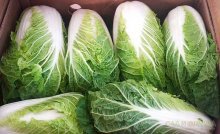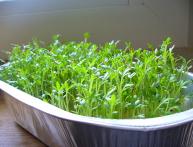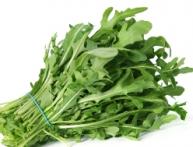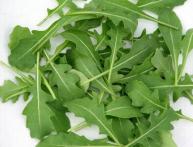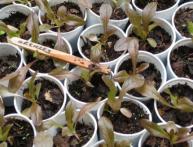Greens in winter or how to grow Chinese cabbage at home
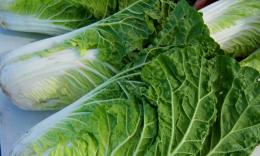
Informational article about the benefits of Chinese cabbage and its use in medicine. How to grow Chinese cabbage on a windowsill at home. Chinese cabbage looks more like a salad than a salad. cabbage. It got its name from its country of origin - China. As a garden crop, it is only gaining popularity. Let's try to find out how to grow Chinese cabbage at home, because this particular type of cabbage contains many useful substances that can help a person survive the winter.
Content:
- Description of the characteristics of Chinese cabbage from a botany point of view
- How to plant Chinese cabbage at home
- The benefits of Chinese cabbage and its use in medicine
Description of the characteristics of Chinese cabbage from a botany point of view
Beijing cabbage, although it belongs to the genus Cabbage from the Brassica family, is still not a subspecies of cabbage, but a subspecies of turnip. Also, Chinese cabbage is close to Sarapetsk mustard. The birthplace of this crop is China, where it was grown already in the 5th century BC. e. Later, from China it spread throughout Japan and Korea. In these countries, Chinese cabbage was used not only as a vegetable. Oil was obtained from its seeds.
Most of the breeding of Chinese cabbage was done in the middle of the last century in Japan. Here, through hybridization, they tried to increase productivity and early maturity.Only after 1970 did European countries and the United States begin to pay attention to Chinese cabbage and in recent decades have allocated quite large areas for it, including for growing in greenhouses.
Chinese cabbage is a biennial plant, but is cultivated as an annual. Its leaves are elongated, corrugated or smooth with clearly visible veins. The veins are sometimes lighter than the leaves. The leaves of Chinese cabbage form a loose head or rosette, up to 25 - 40 cm high. There are head and leaf forms. When cut, the head of cabbage is light, most often light yellow.
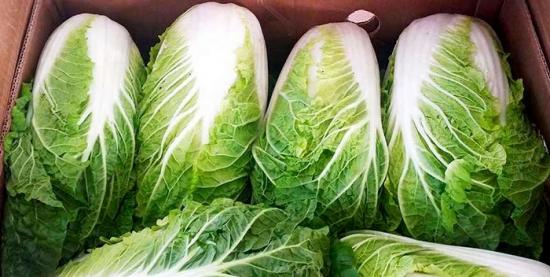
Chinese cabbage can be grown in open ground throughout the season. You can get three harvests over the summer. But given that excessive heat and drought are not beneficial for this crop, it is best to grow it in the spring - early summer, or at the end of the season. In general, Chinese cabbage is quite cold-resistant; it feels good at temperatures of + 15 and can withstand temperatures dropping to - 4 degrees.
In winter, Chinese cabbage can be grown not only in greenhouses, but also at home. In poor lighting Chinese cabbage produces more growth than leaf or head lettuce.
The following varieties are suitable for this:
- Spring - the variety tolerates lack of light well, produces a harvest in 28 days, the heads of cabbage are loose, half-open, weighing 0.2 kg.
- Lenok is an early ripening variety for salads; it forms a fairly dense rosette of leaves weighing up to 0.3 kg.
- Vesnyanka is an early ripening variety with a head weighing up to 0.3 kg, ripening in 30 days, the greens are juicy and tender.
- Khibinskaya is the earliest ripening variety, the leaves can be cut after 25 days, it is very juicy and tasty.
How to plant Chinese cabbage at home
The agricultural technology for growing Chinese cabbage is simple. Since this is a short-day crop, it will grow well indoors from September to March. It is in those months when there is a lack of vitamins and fresh food. greenery.
Planting pots and soil
Chinese cabbage prefers neutral or slightly alkaline soil. You can use a ready-made mixture for cabbage crops or take garden soil with the addition of rotted compost and wood ash. Planting containers must be selected with a sufficiently large volume. It is advisable that there be at least 0.5 - 1.0 soil per plant. This can be either one pot or a planting box. A layer of drainage must be placed at the bottom. Expanded clay and broken brick are suitable.
Sowing seeds
When growing in pots, 3-4 seeds are sown per 3-liter pot. You can use individual pots with a volume of 0.5-1.0 liters. You can sow Chinese cabbage in a box in a row, the distance between seeds is 3-4 cm, between rows - 10 cm. As they grow and are used, the plantings will be thinned out, which will have a positive effect on the growth of the remaining plants.
Seeds are embedded in moist soil to a depth of 0.5 - 1.0 cm. Cover the pots with film and place them in a warm room, where until germination seeds should be at least + 22 degrees. After 5-6 days, seedlings will begin to appear, the film is removed, and the air temperature is reduced by 5-7 degrees.
Growing and care
After emergence, with proper care, Chinese cabbage grows quite quickly. For young leaves to grow well, at night the room temperature should be + 12 + 14, during the day + 15 + 18 is enough.If the apartment has a closed heated loggia or the house has a warm veranda, then containers with Chinese cabbage can be placed there.
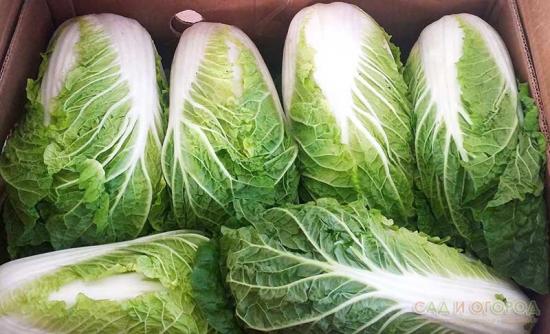
This crop does not require additional lighting. The first harvest can be harvested when the castings reach a size of 8-10 cm. This can be done either by pulling out the plant with its root, or by cutting off individual leaves. In the latter case, new ones will appear in their place. During the growing period, Chinese cabbage requires watering. This should be done when the soil dries 2-3 cm.
When using well-fertilized soil, Chinese cabbage does not need additional fertilizing, since this crop is early ripening and does not have time to deplete the soil in 30-40 days. Fresh Chinese cabbage leaves should be used primarily for preparing salads. You can also add it as greenery to first and second courses without subjecting it to heat treatment.
The benefits of Chinese cabbage and its use in medicine
The modern development of greenhouses can provide businesses with fresh herbs year-round. However, many housewives strive to have fresh greenery, grown on my own on the windowsill. First of all, such greens are safe, healthy, do not contain nitrates and other harmful substances, and they are always at hand.
Growing Chinese cabbage at home provides constant use of a very healthy product for food. This applies primarily to the prevention of cancer.
South Korean scientists have discovered 14 substances in the above-ground parts of Chinese cabbage that prevent the formation of cancer cells in the human body. It is important to know that eating fresh Chinese cabbage is not only cancer prevention.Its use is also indicated after radiation therapy. The inclusion of fresh Chinese cabbage in the diet is recommended during the rehabilitation period after surgical removal of tumors.
This allows patients to recover faster. Also, Chinese cabbage juice can be used as a remedy to promote scarring of stomach ulcers. Due to its low calorie content and high vitamin content, Beijing cabbage helps to cope with metabolic disorders, lose weight and overcome vitamin deficiencies.
Video about growing Chinese cabbage:


